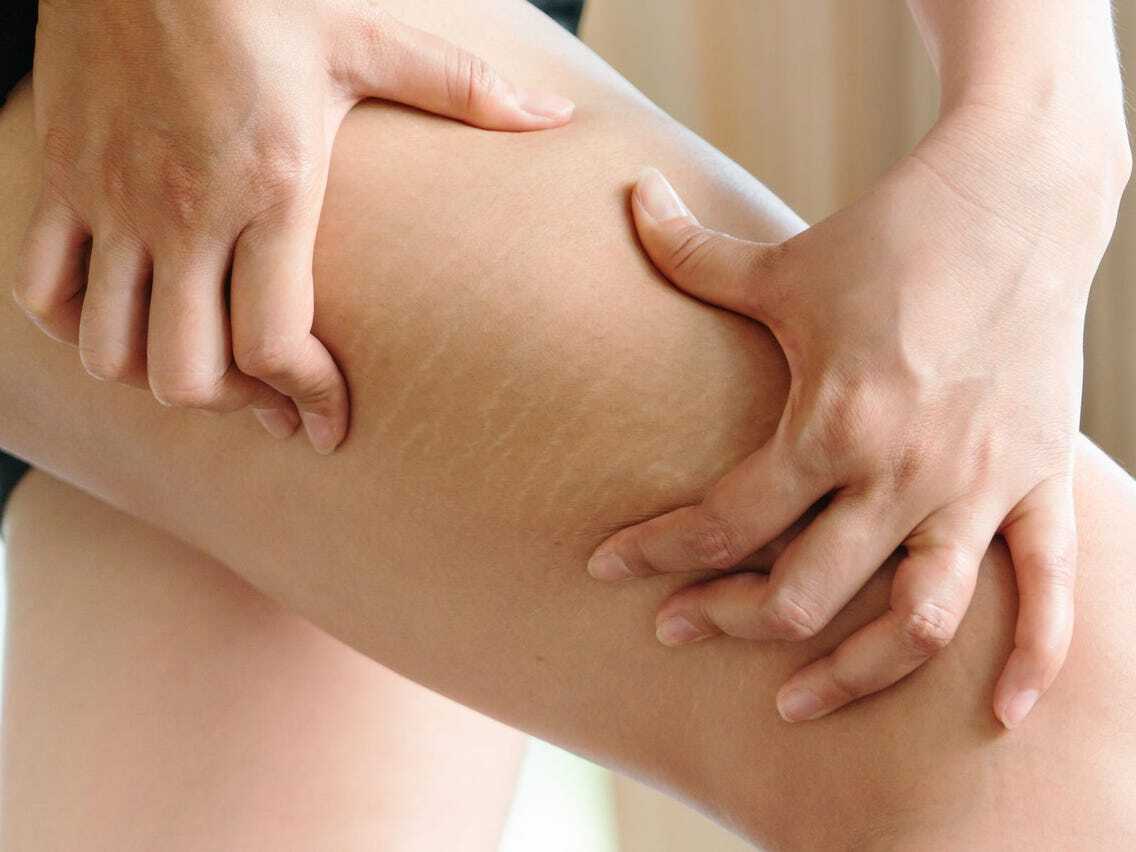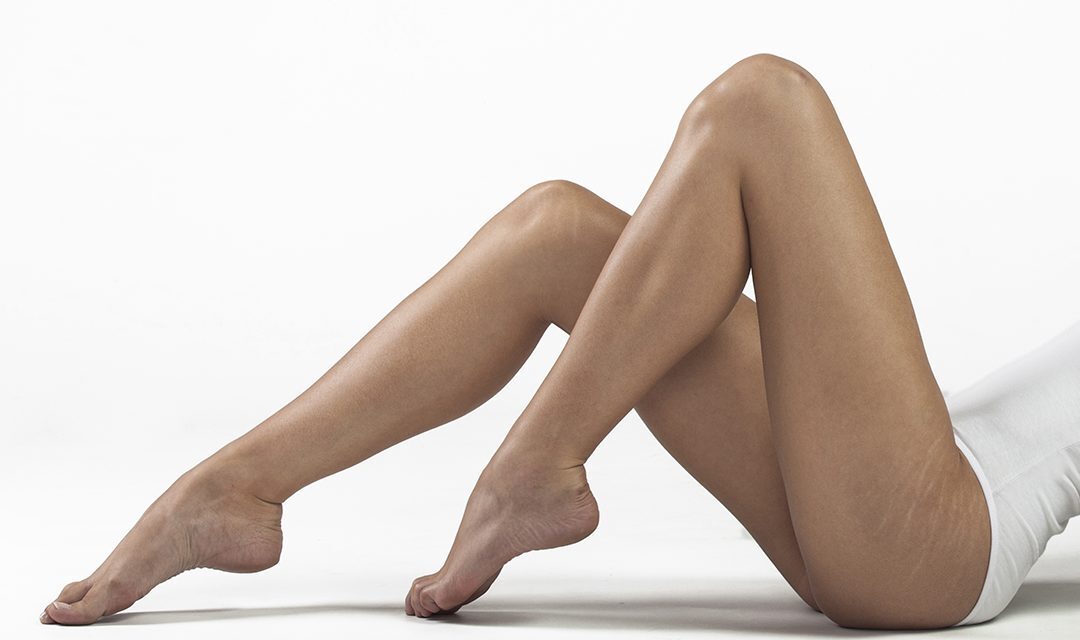Stretch Marks Cream for thighs
Many people have stretch marks on the inner and outer thighs. These conditions occur when the skin stretches due to weight gain, muscle growth, or disease, and they usually subside over time. Stretch marks are common and part of normal life, especially during adolescence and pregnancy. They do not pose a health risk, and there is no medical need to get rid of them. However, some people do not like the appearance of stretch marks and prefer to use creams, light therapy and medical procedures to reduce the appearance of stretch marks. In this article, we explain the causes of stretch marks on thighs and how to remove them. Signs and symptoms of adolescent stretch marks: The appearance of stretch marks can vary depending on the cause, duration, location, and skin type. The following changes are usually noticed on the skin (2). Jagged (serrated) streaks Lines on the skin. Light or faded stripes. Stripes covering a large area of skin. Pink, red or purple stripes. Black or blue stripes.

Stretch marks are the result of tearing of collagen and elastin in the dermis under the skin cell layer (mainly cracks under the skin). When the area heals, stretch marks are left behind. "There is no one way to remove stretch marks permanently and completely, but we have many different treatments to make them look better," said Morgan Rabach, MD, LM Medical NYC certified dermatologist and co-founder. When buying a stretch mark cream, consider the ingredients, your skin type, and how the two work together. In addition, since stretch mark creams are usually used more than once a day, don't forget to pay attention to the cost, because you can buy them often. There are several types of stretch mark creams and stomach moisturizers, from super thick cocoa butter to oil. Therefore, it may be difficult to know what you got. Using the best stretch mark cream to improve your personal beauty routine will not only reduce the appearance of stretch marks, but also improve the overall health and tone of the skin. These topical active ingredients contain ultra-moisturizing emollients that can permanently moisturize cells, repair and strengthen the skin barrier, while promoting cell renewal and improving the production of collagen and elastin. What is a stretch brand? Stretch marks, also called rays, are pale, twisted stripes that usually extend to the abdomen later in pregnancy. Both men and women are prone to stretch marks. The most important parts of stretch marks are the thighs, buttons, chest, arms, buttons, back and Belgium. These markers usually appear shortly after weight gain or loss. When your weight fluctuates, your skin stretches, sometimes causing stretch marks. As mentioned above, it is estimated that 90% of women will grow elastic bands during their strength training. This also occurs during puberty, and muscles are built through bodybuilding, weight loss and pregnancy. How to create a stretch brand Although they are called stretch brands, they are "scars" that form during and after pregnancy. The result of increased levels of glucocorticoids (hormones released by non-terminal nozzles). Chapter Who has stretch marks? When you hear the word stretch marks, you usually immediately think of pregnancy. Yes, pregnancy is one of the most common causes of stretch marks, because a growing baby stretches the abdomen, and hormonal changes weaken connective tissue. As a result, as many as 90% of women will develop stretch marks, [2,3] but more than 25% of those affected are men (within the scope of HRA). Many health conditions, such as adolescent growth spurts, sudden weight gain, or rapid gain in muscle mass, can cause people to develop stretch marks.

Genetics and hormones seem to affect your sensitivity to stretch marks. [1,3] Elevated steroid levels caused by drugs or certain diseases (such as Cushing, Marfan, or Ehlers-Danlos syndrome) can also weaken connective tissue and increase the risk of stretching. Treatment and home remedies When stretch marks appear on the skin for the first time, they appear red, but over time they will turn white or silver. The goal of reducing red stretch marks is to minimize redness, skin swelling and irritation. The goal of white stretch marks is to increase the content of collagen and elastic fibers in the skin, reduce inflammation, and maintain skin moisture. topical agents are popular for the prevention and treatment of stretch marks. However, there is little evidence that over-the-counter ointments, creams or gels are effective. There is other evidence that laser and light therapy can reduce stretch marks. However, these studies are often of low quality, few participants, and the results are often difficult to interpret. topical creams and gels The most common treatments for stretch marks are topical creams, ointments, and gels, some of which have been shown to be helpful. These options are described in the following sections. Collagen Therapy Increasing collagen production in stretch marks can make the skin more elastic, thereby reducing the appearance of stretch marks.
